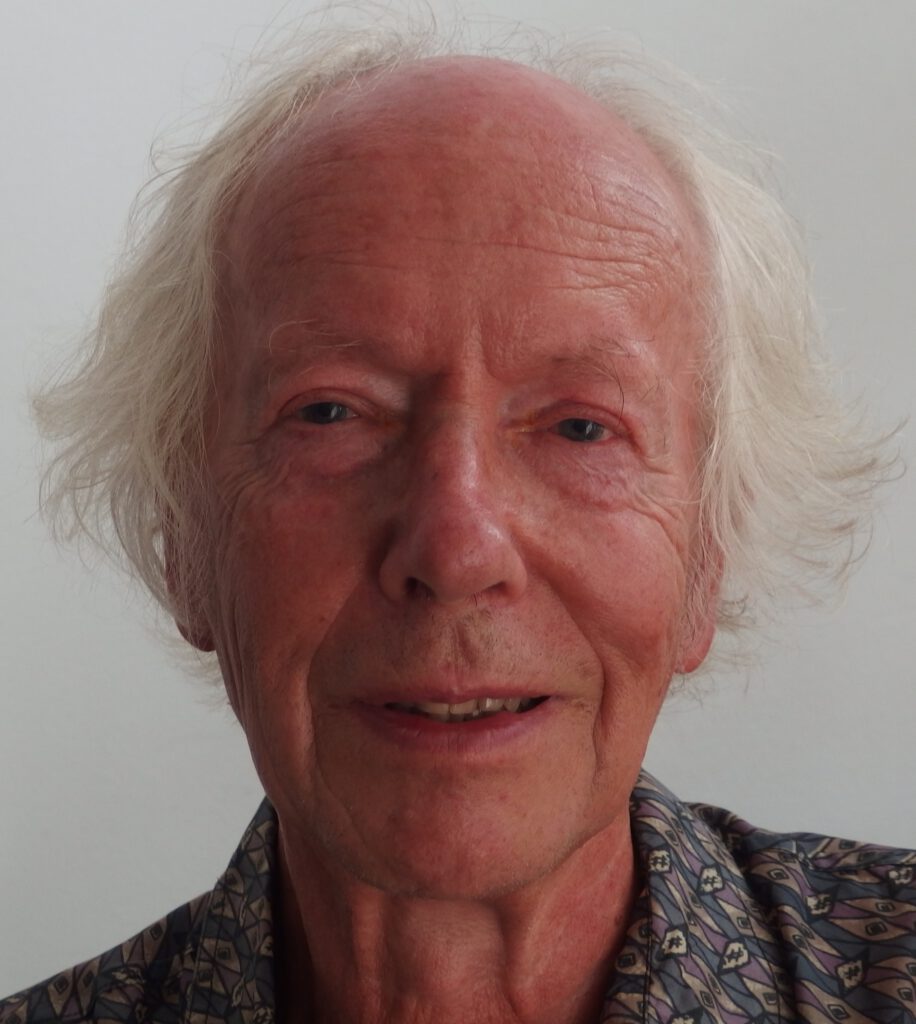
Joost Smiers Dissenting
Maybe I am contrary.
My rebelliousness probably stems from a visit as a ten-year-old to the Amsterdam Stedelijk Museum, 1953. The cold war – in the world and also at my home – cast a gray veil over my young life. There, in that museum I suddenly saw paintings that splash the colors and rarities. Then I felt: a happier world is possible where I do not have to resign myself to the seemingly unshakable misery around me. This later led to the arts – especially the freedom of the arts and the position of artists – being given an important place in my research, as the subject of my dissertation in 1977 at the University of Amsterdam, and in many publications since then.
I was born in Amsterdam in 1943, a year before the hunger winter.
I emerged from that war as a starving, shy city-whitefish who had to be patched up on a farm in the country for a few summers. The shyness was far from gone. My first memory is from 1946, that my eldest brother had to go to “our Indies” as a conscript. The bus came into the street and there he left. My mother prayed for the sacred heart image that hung in the corner of the room. Then the pastor came to comfort her. In the years that followed, every night on the radio during supper – yes, exactly at 6:00 pm – there was the program of our armed forces oversea. Its exciting opening tune is etched in my musical memory.
The second great memory in my life is that that brother came back just before Easter 1950. Flags hung in the street and there was cake. At Easter there was a big mess between my father and my brother: he stopped going to church. As a little child, that turned the Dutch saying around into: after each sun some rain must fall.
In the years that followed, during the many conflicts I sat quietly at home reading a book in the corner. It took me a long time to become a more social being. The Vatican Council of the early 1960s certainly helped in this regard, which helped me to leave the Catholic Church in one fell swoop. Add to this the sexual freedom, the student movement, Paris ’68, the Maagdenhuis occupation, the Prague spring and how it turned out miserably. I took my first steps on the journalistic path as editor of the university newspaper Folia Civitatis. I then worked for several years as a freelance journalist at the Dutch daily newspaper “De Volkskrant.”
During my studies I was a candidate assistant in the field of the latest history of China. The latest history of Indonesia – understandably from my previous history – had my special attention. I was also chairman of the student association Akhnaton for a year, and a member of the ASVA Members’ Council and the Dutch Student Council. I graduated as a political scientist in 1973, and obtained my PhD in 1977 with a dissertation entitled Cultuur in Nederland (Culture in the Netherlands) 1945-1955. Opinions and Policies, published by the SUN publishing house..
In 1975 I accidentally ended up in education: as a teacher in the cultural work department at the social academy de Karthuizer in Amsterdam. There I found many students who were involved in setting up all kinds of new art initiatives. In order to serve them well, there should be full training that could help them manage those initiatives without making too many mistakes, in the interests of the arts.
With Giep Hagoort, still a good friend of mine, I designed an Art Management course in the early eighties at the then newly formed Utrecht School of the Arts (HKU). In 1993 I became a professor and director of research there. I am still grateful to the University for the intellectual freedom that has been given me there. In the same year I was a visiting professor at UCLA, Los Angeles for several months.
From 1993 onwards I started to pay special attention to intellectual property rights, and in particular to the many arguments why they are outdated and in dire need of being abolished. An important part of my analysis was devoted to showing how innovation in many areas and new artistic creations could thrive without intellectual property rights. It will come as no surprise that an important topic on my website is about this theme.
From the mid nineties I was involved in various international institutes and projects, including the cultural department of the Council of Europe and Culturelink, a global research network in the field of culture led from Zagreb. I was part of CopySouth, a network that aimed to contribute to the critical reflection on copyright in the global south. I was also active in the International Network for Cultural Diversity that was one of the driving forces behind the creation of the Unesco’s Convention on Cultural Diversity. I was a member of the New Directions on Copyright Law research group led by Professor Fiona Macmillan from Birkbeck, University of London.
I have also simplified the various subjects. Disappearing under Art and Culture: Value to Society, and Cultural Industries. Those topics are discussed in the other subheadings.
In Amsterdam, too, all intermediate heads are disappearing (The tower that was never built; Stopera facade planting; Madness in the Red Light District; Paleis voor Volksvlijt). I am going to mention all these subjects under Amsterdam.
My apparently radical and unruly proposals on the abolition of intellectual property rights drew attention. This led to many invitations from all over the world to speak about this at conferences and to give guest lectures.